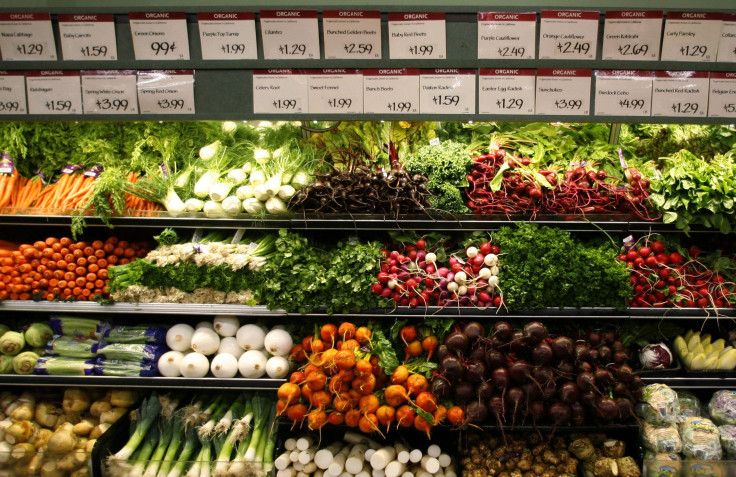Whole Foods Confronts Its "Whole Paycheck" Image Amid Growing Competition

The number of middle-class American foodies who shop for organic and minimally processed natural groceries is growing. Yet, sales growth is sliding and profit is leveling at the nation’s largest health food purveyor, Whole Foods Market.
Analysts polled by FactSet expect Whole Foods to report quarterly profit Wednesday of 32 cents a share, roughly flat compared with a year ago. The company is expected to post sales of $3.26 billion, up 9.4 percent from a year ago. Wall Street expects same-store sales growth at 3.1 percent, which would be the company’s weakest growth in four years.
Meanwhile, the organic, natural and specialty food industry has grown an annualized 11.5 percent this year, compared to 8.6 percent last year, according to Jeffries research.
In the early 1990s, when Whole Foods first began popping up in middle-class urban centers and hip suburbs, its stores were among the few places shoppers could find a wide variety of wholesome, organic produce. The company garnered the nickname “Whole Paycheck,” but still, consumers were willing to pay premium prices for hard-to-find items.
Now, Whole Foods is struggling to maintain its market share as traditional grocery stores like Walmart and Kroger increasingly stock their shelves with an array of organic and non-GMO labels. At the same time, niche stores like Trader Joe’s and Sprouts Farmers Market are attracting the newly health-conscious with lower prices than Whole Foods. According to Jeffries equity research Trader Joe’s prices its comparable products 30 percent lower than Whole Foods. Sprouts products are 18 percent lower and Kroger’s comparable goods are 13 percent under.
That’s despite Whole Foods’ effort this year to combat its image problem with price reductions on popular items.
“We believe the key to getting the middle income consumer will still be changing its price perception,” Wells Fargo analyst Kate Wendt said in late October.
Since a national brand campaign launched this summer, Whole Foods Market has marketed itself as “America’s healthiest grocery store” where “values matter.” The company says it sources produce and meat from more than 1,000 local, independent U.S. farms and ranches. But the campaign didn’t explicitly mention the grocer’s price reductions. After disappointing sales in the second quarter, Whole Foods slashed prices for key categories like produce by about 2.5 percent and other food items by 7.2 percent from a year ago.
“We haven’t seen ads trumpeting pricing changes yet, which may be the more crucial dynamic,” said David Magee and Mitch Van Zelfden, CFAs for SunTrust, in a note Monday.
Suntrust found in a nationwide survey of 1,000 respondents that nearly 70 percent of Whole Foods shoppers haven’t noticed changes to prices. The respondents varied in age and income, and the same portion believes they’re paying for superior quality products.
Whole Foods could regain sales growth in the long term. In September, the company announced its first customer rewards program and a partnership with Instacart, an online one-hour delivery service available in more than a dozen cities. Instacart’s personal shoppers also fulfill orders from Kroger, Costco and others.
© Copyright IBTimes 2024. All rights reserved.






















